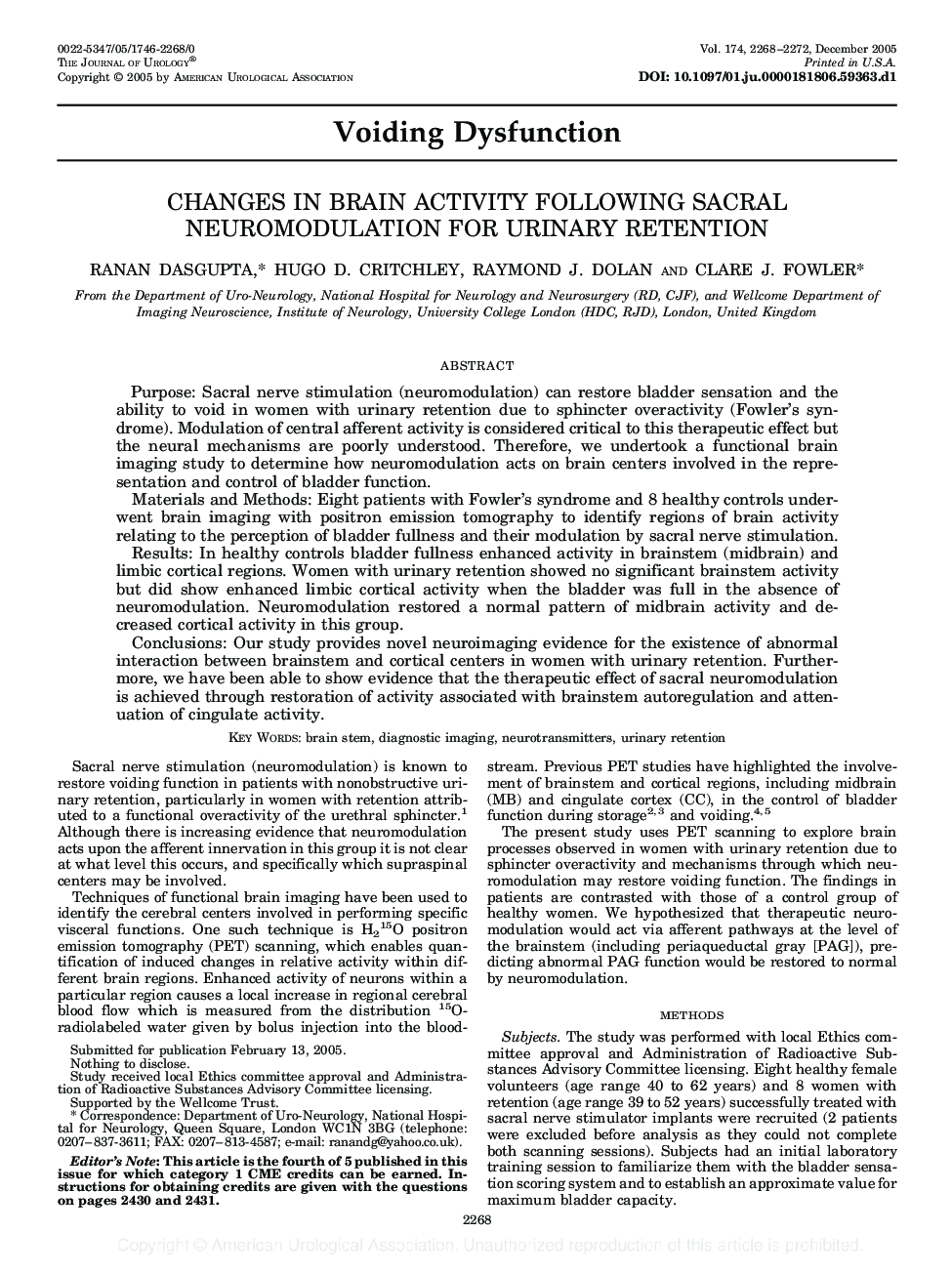| Article ID | Journal | Published Year | Pages | File Type |
|---|---|---|---|---|
| 3877639 | The Journal of Urology | 2005 | 5 Pages |
ABSTRACTPurposeSacral nerve stimulation (neuromodulation) can restore bladder sensation and the ability to void in women with urinary retention due to sphincter overactivity (Fowler’s syndrome). Modulation of central afferent activity is considered critical to this therapeutic effect but the neural mechanisms are poorly understood. Therefore, we undertook a functional brain imaging study to determine how neuromodulation acts on brain centers involved in the representation and control of bladder function.Materials and MethodsEight patients with Fowler’s syndrome and 8 healthy controls underwent brain imaging with positron emission tomography to identify regions of brain activity relating to the perception of bladder fullness and their modulation by sacral nerve stimulation.ResultsIn healthy controls bladder fullness enhanced activity in brainstem (midbrain) and limbic cortical regions. Women with urinary retention showed no significant brainstem activity but did show enhanced limbic cortical activity when the bladder was full in the absence of neuromodulation. Neuromodulation restored a normal pattern of midbrain activity and decreased cortical activity in this group.ConclusionsOur study provides novel neuroimaging evidence for the existence of abnormal interaction between brainstem and cortical centers in women with urinary retention. Furthermore, we have been able to show evidence that the therapeutic effect of sacral neuromodulation is achieved through restoration of activity associated with brainstem autoregulation and attenuation of cingulate activity.
